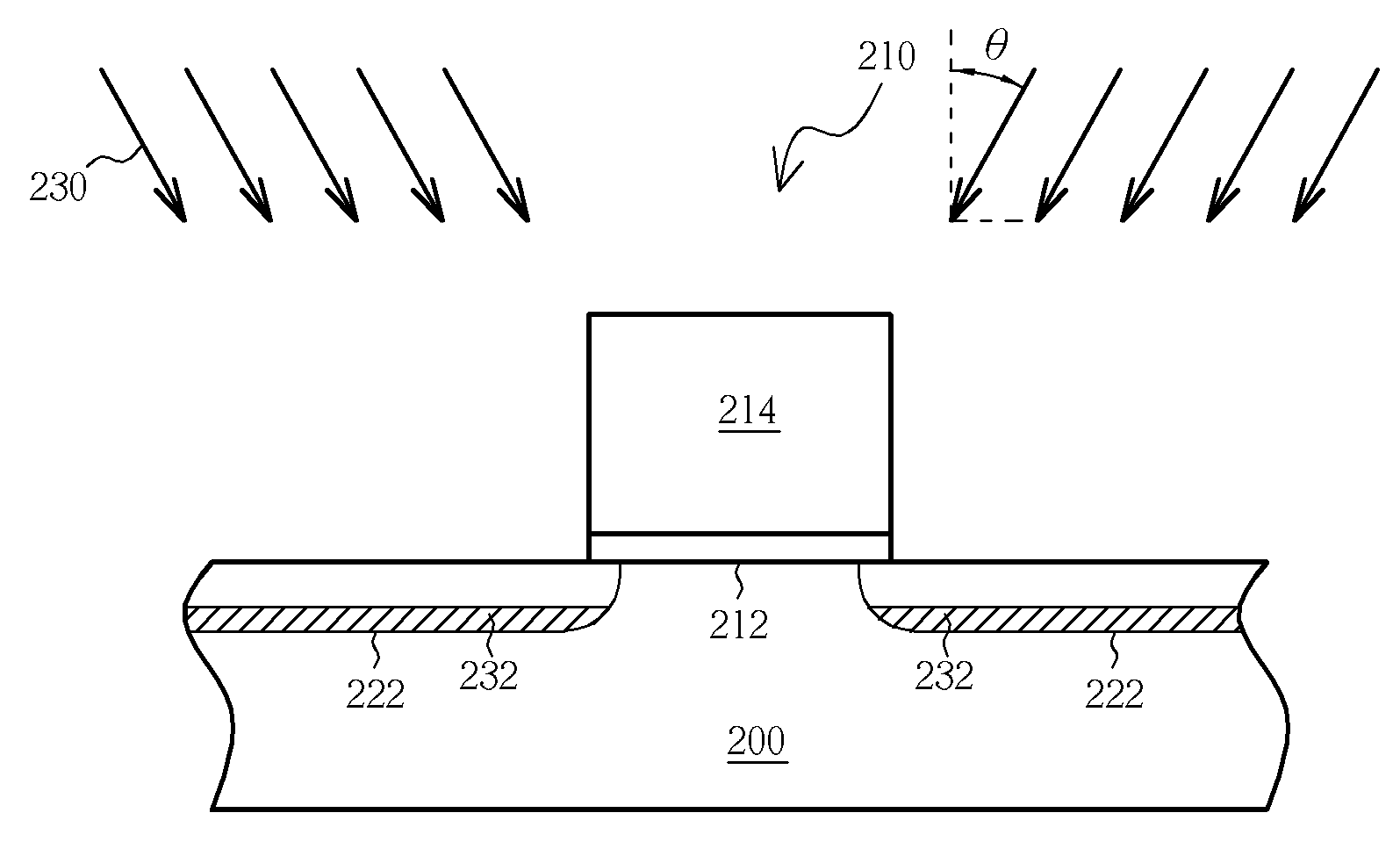Method for forming MOS transistor
a metaloxide semiconductor and transistor technology, applied in transistors, basic electric elements, electrical equipment, etc., can solve the problems of generating considerable interstitial defects, reducing the lateral diffusion and ted effect of the first dopant, and affecting the effect of the formation depth control
- Summary
- Abstract
- Description
- Claims
- Application Information
AI Technical Summary
Benefits of technology
Problems solved by technology
Method used
Image
Examples
Embodiment Construction
[0021]Please refer to FIGS. 4-8, which are schematic drawings illustrating a first preferred embodiment provided by the present invention. As shown in FIG. 4, a substrate 200 is provided. The substrate 200 comprises a semiconductor wafer, or a silicon-on-insulator (SOI) wafer, etc. The substrate 200 has completely undergone a shallow trench isolation (STI) process and a well formation process, and at least a gate structure 210 having a gate dielectric layer 212 and a gate 214 is formed on the substrate 200. Then a vertical or angled pre-amorphization (PAI) process 220 is performed to form amorphized regions 222 in the substrate 200 adjacent to two sides of the gate structure 210.
[0022]Please refer to FIG. 5. A co-implantation process 230 is subsequently performed to implant a co-implant dopant 232 into the amorphized regions 222. It is noteworthy that the co-implantation process 230 is an oblique angle implantation process and that an angle θ used in the process is in a range from 0...
PUM
 Login to View More
Login to View More Abstract
Description
Claims
Application Information
 Login to View More
Login to View More - Generate Ideas
- Intellectual Property
- Life Sciences
- Materials
- Tech Scout
- Unparalleled Data Quality
- Higher Quality Content
- 60% Fewer Hallucinations
Browse by: Latest US Patents, China's latest patents, Technical Efficacy Thesaurus, Application Domain, Technology Topic, Popular Technical Reports.
© 2025 PatSnap. All rights reserved.Legal|Privacy policy|Modern Slavery Act Transparency Statement|Sitemap|About US| Contact US: help@patsnap.com



